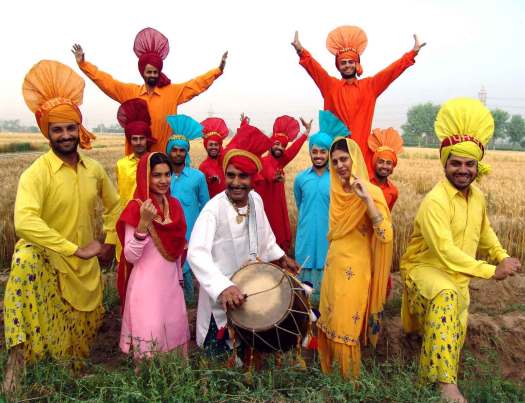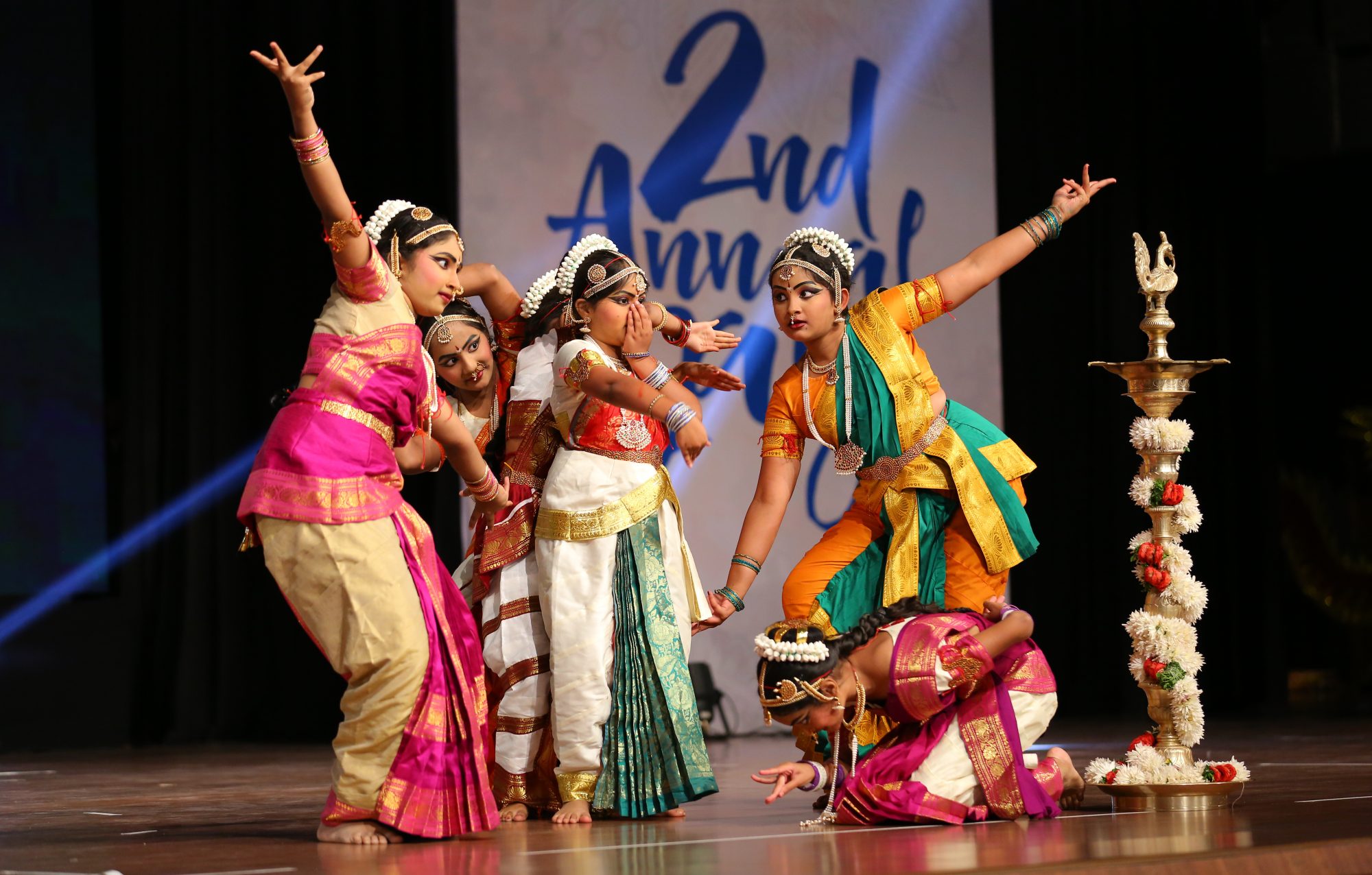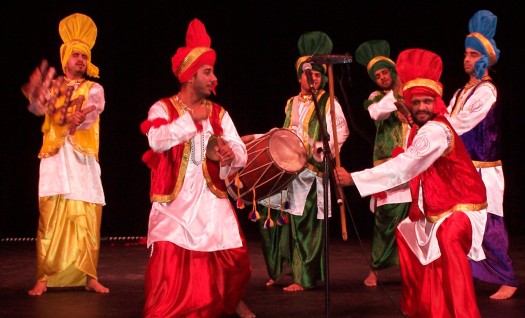 A new folk dance, representative of the state of Punjab and composed of glimpses of men’s Punjabi dance styles, was created and eventually received the title of bhangra. First developed in India and attaining a rather standardized form by the 1980s, the folkloric bhangra was exported to other countries by Punjabi emigrants. By the 1990s, a still newer style of dance called bhangra was being staged in the Punjabi Diaspora, often characterized by a fusion with Western dance styles and the use of prerecorded audio mixes. Aside from these specific dance genres, Punjabi dancing in general, especially when done to popular bhangra music, is often casually called “bhangra”
A new folk dance, representative of the state of Punjab and composed of glimpses of men’s Punjabi dance styles, was created and eventually received the title of bhangra. First developed in India and attaining a rather standardized form by the 1980s, the folkloric bhangra was exported to other countries by Punjabi emigrants. By the 1990s, a still newer style of dance called bhangra was being staged in the Punjabi Diaspora, often characterized by a fusion with Western dance styles and the use of prerecorded audio mixes. Aside from these specific dance genres, Punjabi dancing in general, especially when done to popular bhangra music, is often casually called “bhangra”
The origins of the community form of Bhangra are speculative and many. I.S. Dhillon believes Bhangra to be related to the Punjabi dance ‘bagaa’ which is a martial dance of Punjab.
A participatory community dance called Bhangra is attested since the 1880s in northern areas of the Punjab region. Bhangra was a seasonal dance, practiced in the month leading up to the festival of Vaisakhi. During this month, the harvest, especially wheat crop, was gradually reaped. Local fairs marked the festival of Vaisakhi. It was after days of harvesting and at Vaisakhi fairs that bhangra was performed, as a dance of men alone.
The 1947 Partition of the Punjab region, in which millions in population relocated between the new nations of Pakistan and India, disrupted the practice of these Vaisakhi fairs. Most of the area in which community bhangra had been practiced became contained within Pakistan, however the Sikh and Hindu participants were at this time compelled to move to areas in India. Bhangra as a “folk” dance of villages essentially ceased at this time.
The core areas of bhangra were Sialkot, Gujranwalla, Sheikhupur and Gurdaspur.
Bhangra dance is based on music from a dhol, folk singing, and the chimta. The accompanying songs are small couplets written in the Punjabi language called bolis.
Bhangra singers employ a high, energetic tone of voice. Singing fiercely and with great pride, they typically add nonsensical, random noises to their singing. Likewise, often people dancing to Bhangra will yell phrases such as hoi, hoi, hoi; balle balle; chak de; oye hoi; bruah (for an extended length of about 2–5 seconds); haripa; or ch-ch (mostly used as slow beats called Jhummar) to the music.
Traditional men wear a chaadra while doing bhangra. A chaadra is a piece of cloth wrapped around the waist. Men also wear a kurta, which is a long shirt. In addition, men wear pagri (turban) to cover their heads.
In modern times, men also wear turla, the fan attached to the pagri. Colorful vests are worn above the kurta. Phummans (small balls attached to ropes) are worn on each arm.
Women wear a traditional Punjabi dress known as a salwar kameez, long baggy pants tight at the ankle (salwar) and a long colorful shirt (kameez). Women also wear chunnis, colorful pieces of cloth wrapped around the neck.
These items are all very colorful and vibrant, representing the rich rural colors of Punjab. Besides the above, the bhangra dress has different parts that are listed below in detail:
- Pag (turban, a sign of pride/honor in Punjab). This is tied differently than the traditional turban one sees Sikhs wearing in the street. This turban has to be tied before each show.
- Kurta, similar to a silk shirt, with about four buttons, very loose with embroidered hipatterns
- Lungi or chadar, a loose loincloth tied around the dancer’s waist, which is usually very decorated
- Jugi, a waistcoat with no buttons
- Rumāl, small “scarves” worn on the fingers. They look very elegant and are effective when the hands move during the course of bhangra performance.








Very well written article. I think such article always help to explore the tradition of our regions and specialty we own. The images you use are awesome. I would like to thanks your for the article.
LikeLiked by 1 person